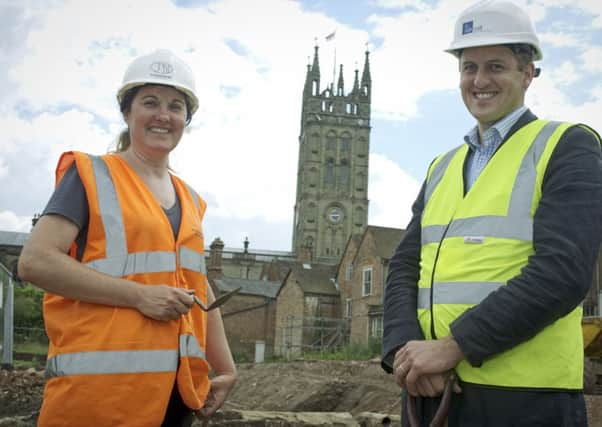A rare Warwick view not seen in nearly 100 years


The pair met at the back of Northgate Street on Tuesday as Ms Rann prepares to wind up her archaeological dig and Mr Brown gets ready to take full control of the site which includes the renovation of 18 listed buildings.
Ash Mill has made a £10 million investment in buying and restoring the town centre homes once occupied by Warwick’s great and good, but more recently used as county council education offices.
Advertisement
Hide AdAdvertisement
Hide AdCounty project officer Ms Rann told him: “So far we’ve found three wells, some medieval rubbish pits, shoe buckles, lots of Saxo-Norman pottery and a Tudor coin from the days of Edward VI.”


Mr Brown told her how pleased he was that the north aspect of St Mary’s could finally be seen again now that some ugly 1930s buildings had been bulldozed. The sideways view of St Mary’s will also offer a lovely amenity - regularly punctuated by church bells - to those who go on to buy one of the Georgian houses once they are restored to their former glory. Now the land has been cleared and once the dig by the county council’s Archaeology Warwickshire team is complete, the property renovation can start.
Mr Brown hopes a show house at number 10 Northgate Street will be completed by next spring.
So far some 180 people have registered an interest in owning one of the 18 houses, which will be sold as “shells” to be fitted out to individual ‘grand designs’.
Advertisement
Hide AdAdvertisement
Hide AdThe smallest “shell” could start at £500,000 with the largest, extending to 4,000 square feet of living space, rising to in excess of £1 million.
Some of the bigger properties may also be sub-divided into smaller units, all with the approval of English Heritage, which allowed the demolition of an extension to a Grade II starred building on the row.
M Rann has been surprised by the amount of red sandstone, normally associated with Kenilworth and Coventry, that has been found on site. She was also intrigued by a 15th century wooden and metal box containing a cracked drinking vessel.
She added: “We are removing and cataloguing everything of interest and recording the site lay-out for future reference.
“We expect to finish next week so the renovation of the properties can begin.”